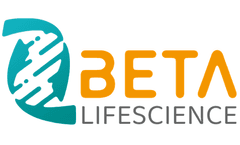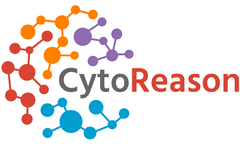Tumor Microenvironment Articles & Analysis: Older
31 articles found
These innovative methods enable the identification and generation of highly specific antibodies that can deftly navigate the complex tumor microenvironment of bladder cancer. By harnessing a deep understanding of immunology and molecular biology, Alfa Cytology strives to supply more possibilities for preclinical therapeutic regimens. ...
These models allow researchers to mimic the tumor microenvironment, providing insights into the behavior of cancer cells, their interactions with surrounding tissues, and their responses to various therapeutic agents. ...
Passive targeting exploits the enhanced permeation and retention (EPR) effect, a phenomenon observed in certain pathological tissues, such as tumors, characterized by leaky vasculature and poor lymphatic drainage. ...
Precision-Cut Lung Slices (PCLS) have emerged as a innovative ex vivo model that allows researchers to explore deep into lung physiology, disease mechanisms, and pharmacological responses. By offering a unique combination of biological complexity and controlled experimental conditions, PCLS serve as a critical bridge between the limitations of traditional in vitro cell cultures and the ...
Moreover, the versatility of these probes allows for multiplexing with other markers, providing researchers with a comprehensive analysis of cellular interactions and dynamics within the tumor microenvironment. This comprehensive approach is essential for gaining insights into the mechanisms of CAR-T cell therapy and optimizing treatment strategies. ...
Brain tumors can be broadly categorized into primary and secondary (or metastatic) tumors. Primary tumors originate in the brain1, while secondary tumors spread from other body parts. ...
While it was first discovered in gliomas (a type of brain tumor), TNC protein is present in a variety of tissues, especially during embryonic development and tissue remodeling after injury. ...
Dr. Kate Sasser from Tempus led a discussion on the potential of antibody-drug conjugates (ADCs), their challenges in targeting tumor antigens, and the future of cancer treatment with Dr. Daniel Johnson, Dr. Funda Meric-Bernstam, and Dr. Kellogg Parsons. The oncology field is rapidly advancing with the development of antibody-drug conjugates (ADCs), offering new hope for ...
ByTempus
Alfa Cytology has announced tumor models customization service for pancreatic cancer research. ...
Notably, both cancer cells and host cells employ inducible CD73 expression, alongside other adenosinergic molecules, to establish and perpetuate an immunosuppressive microenvironment within the tumor. This orchestrated strategy affects various dimensions of the immune response. ...
Reduced CADM1 expression may lead to the dampening of immune cell responses, limiting their ability to identify and attack cancer cells effectively. Immunosuppressive Microenvironment: Tumors can create an immunosuppressive microenvironment that hinders immune responses. CADM1 may be involved in modulating the immune cell composition within the ...
It is involved in the formation and development of the tumor microenvironment (TME) and plays an important role in regulating immune responses. ...
The properties that an optimal linker needs to fulfill are manifold: for efficient delivery of the payload to the tumor, the linker has to be stable in circulation, but at the site of the tumor, it has to be cleaved to release the active payload catabolite from the antibody. Depending on the target biology of the antibody, the linker may be cleaved either ...
The Challenge: One of the most common challenges in immuno-oncology is identifying the indications and patient populations that would benefit from a specific therapy, especially on top of Standard of Care (SOC) treatments. Our platform tackled this challenge of indication prioritization and patient stratification for a combination of a specific target (A) with an anti-PDX drug that one of our ...
Summary Inflammation is a hallmark of the tumor microenvironment and an area of active investigation. To better understand how tumor inflammation differs from general inflammation, such as in gum disease, Drs. ...
Its biological function has not yet been clarified, but due to its limited distribution in normal tissues and high expression in some tumor tissues, it is expected to be used in tumor-specific treatment. ...
At present, 15 ADCs have been approved globally for hematological malignancies and solid tumors. In addition, more than 100 ADC drug candidates are currently under clinical investigation. ...
However, in MSLN knockout mice, the ultrastructure of the mesothelin membrane is affected, indicating that mesothelin may affect the formation of the tumor microenvironment. The growth of cancer cells in the abdominal cavity of MSLN knockout mice is significantly reduced compared with wild-type mice. Mesothelin or MPF supplementation stimulates lung cancer growth ...
Advances In CircRNA Research CircRNAs are currently relatively well studied in the field of tumor research. Studies have shown that circRNAs play critical roles in many aspects of multiple malignancies, such as cell cycle and proliferation, apoptosis, vascularization and invasion. Currently, it has been found that circRNAs can act as tumor antigens in immune ...
Chimeric antigen receptor T cells (CAR-T) and T cell antigen receptor chimeric T cells (TCR-T) are currently the "top stream" in adoptive T cell tumor immunotherapy. In particular, CAR-T therapy, which has been approved by the FDA, is rewriting the treatment paradigm of some hematological tumors. However, adoptive T cell therapy remains of little success in ...














